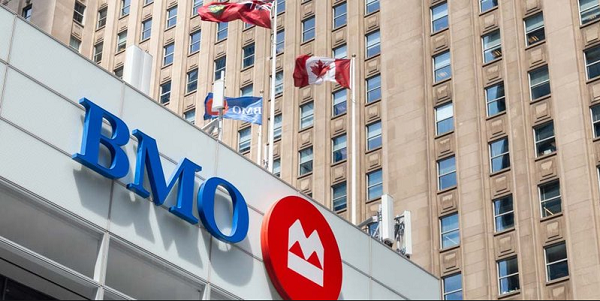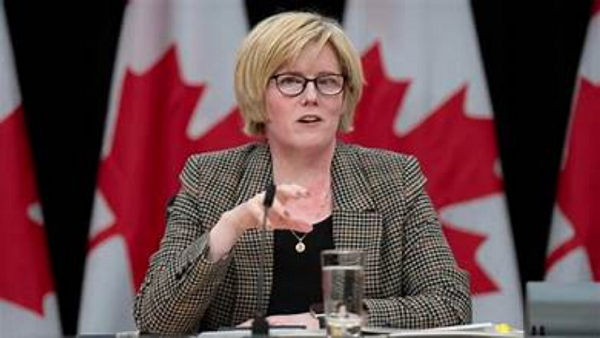Canada’s big banks facing new taxes and costly regulatory changes
Canada’s biggest banks are facing a myriad of new taxes and costly regulatory changes, and analysts say these pressures are among the biggest threats to already squeezed profits in the sector.
The country’s banking watchdog, the Office of the Superintendent of Financial Institutions, has hiked capital requirements and bolstered its tools to safeguard the industry from rising risks. In its 2023 budget, Ottawa tacked on another tax change targeted at financial institutions and said it would also crack down on bank fees.
Meanwhile, fraud and accounting oversight in the industry is shifting. The Financial Transactions and Reports Analysis Centre of Canada (FinTRAC) is ramping up enforcement of compliance issues ahead of a coming review of Canada’s anti-money-laundering practices.
The federal financial intelligence agency has already levied fines on Royal Bank of Canada and Canadian Imperial Bank of Commerce for various violations. And global reforms known as Basel III are requiring banks to carry more capital and limit risks.
The changes are hitting the big banks’ bottom lines. Profit growth slowed over the past year as high interest rates dampened demand for loans and mounting expenses prompted the lenders to slash their work forces.
“The shifting regulatory environment does not bode well for the Canadian banks, with the shift resulting in higher effective tax rates and higher capital requirements,” Bank of Montreal analyst Sohrab Movahedi said in a note to clients.
Senior bankers say that the lenders can withstand any financial blows caused by the heightened measures, but the industry has been protesting against the added costs.
Over the past two years, the federal government unveiled three new taxes specifically aimed at banks and insurers. In September, the Canadian Bankers Association called out the Liberals for failing to consult with the industry before introducing the taxes, saying that the government is “picking on” banks and insurers.
In last year’s federal budget, the Liberals introduced an amendment to the tax treatment of dividends paid on Canadian shares held by financial institutions – marking the third taxation change aimed at pulling billions of dollars from the major banks.
The update would require banks and insurers to count those dividends as business income, generating about $3.15-billion in additional taxes over five years starting in 2024, and $790-million annually after that.
Companies in other industries are still exempt from paying tax on the Canadian dividends they receive.
The first of the tax changes, known as the Canada Recovery Dividend, required large banks and life insurers to pay a one-time 15-per-cent tax on taxable income above $1-billion for 2021. It is expected to raise $604-million annually, starting in 2022, for a total of $3.02-billion over five years.
The second measure made a permanent change to the sector’s corporate income-tax rate, up 1.5 percentage points to 16.5 per cent on taxable profits more than $100-million, to raise $2.25-billion over five years.
The latest measure affecting dividends will ultimately reduce the tax-adjustment benefit that the banks post in their quarterly earnings, with National Bank of Canada likely booking the largest impact compared with its total revenues, Mr. Movahedi said.
In the fourth quarter, the lender booked $165-million in income from tax adjustments. While that number is expected to drop, less than half of the adjustment will be lost, Étienne Dubuc, National Bank executive vice-president of financial markets, said during a conference call with analysts.
“I don’t foresee any significant modification in strategy or deployment because of this tax change,” Mr. Dubuc said. He added that demand for equity products – and the dividends that they offer – has fluctuated in recent years, and that he expects growth in other areas of the bank’s financial markets business to help offset the impact from the tax change.
“We believe we’ll see a lot of new business opportunities in the global capital markets in 2024,” he said.
National Bank of Canada analyst Gabriel Dechaine said that the sector “starts the year taking a step back” amid a tighter political and regulatory environment.
“We suspect the next round of governmental action will be aimed at banking fees, about which they have already strongly hinted,” Mr. Dechaine said in a note to clients.
In October, Finance Minister Chrystia Freeland asked Canada’s largest lenders to help borrowers cope with higher mortgage costs. She said that the federal government is pushing banks to comply with new guidelines aimed at helping financially stressed mortgage borrowers afford their rising payments.
Ottawa also asked the lenders to reduce certain personal banking fees, including overdraft fees and non-sufficient-funds charges, and provide more transactions and services with low-cost chequing accounts.
Overdraft fees have come under fire in the U.S. as the Biden administration cracks down on the amount that banks can charge customers for overdrawing on their accounts, prompting the country’s lenders to lower or eliminate certain charges for customers.
In the first three quarters of 2022, combined revenue from overdraft and non-sufficient-funds fees dropped 33 per cent in the United States to US$5.8-billion from US$8.6-billion in the first three quarters of 2019, according to data from the Consumer Financial Protection Bureau.
Neil McLaughlin, Royal Bank of Canada group head of personal and commercial banking, said during a fourth-quarter earnings call that the conversation between the banks and the federal government is largely focused on low- and no-cost accounts and non-sufficient-funds fees.
Among Canada’s major banks, non-sufficient-funds fees range from $45 to $48 dollars, with RBC charging the lowest amount. And many of the major banks started offering low-fee chequing accounts with limited services since the federal government secured public commitments from the lenders in 2014.
“We don’t expect – to be very clear – any material reduction in other income on the retail bank as a result of this,” Mr. McLaughlin said.
This article was reported by The Globe and Mail
















